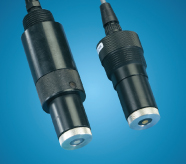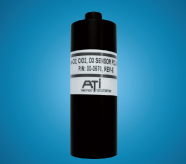Your Cart is Empty
FREE UK DELIVERY for all Vikan Orders over £150 GBP. MOQ £70.
Q46H
ATi’s Dissolved Ozone analyser provides online monitoring and control of ozonation systems, including the sensitivity needed for challenging applications, such as pharmaceutical grade water or semi-conductor wash water.
Q46H Dissolved Ozone Analyser offers reliable on-line monitoring and control of ozonation systems. It is a totally flexible monitor suited to a wide range of applications, from the standard 0-2 ppm display range required by water bottling systems or municipal water treatment, to the high range ones of 0-20 or 0-200 ppm. This novel instrument is also capable of measuring DO3 concentrations as low as 0-200 ppb full scale with unparalleled sensitivity, therefore being suitable for even the most challenging applications such as pharmaceutical grade water or semiconductor wash water.
Water treatment processes using ozone gas have steadily increased over the past 20 years. Ozone has proven to be an extremely effective oxidant, removing organic carbon from raw water and destroying most pathogens. As a result, ozone treatment is now widely used in the semi-conductor, pharmaceutical, and food and beverage industries. In addition, many large cities are now using ozone to improve the quality of the drinking water distributed to their customers.
ATI’s Model Q46H/64 Dissolved Ozone Monitor provides an economical and reliable measurement system for water quality monitoring and controlling ozone treatment systems. With a variety of outputs including 4-20 mA analog, PID control, three adjustable relays, and digital communications, the Q46H/64 is adaptable to any ozone application.
 Q46H/64 monitors use a polarographic membraned sensor to accurately measure Ozone in water. The sensor operates much like a battery, generating current that is linearly proportional to the concentration of chlorine dioxide in solution. An Ozone permeable membrane isolates the sensor from the measured sample and insures that the measurement is interference free.
Q46H/64 monitors use a polarographic membraned sensor to accurately measure Ozone in water. The sensor operates much like a battery, generating current that is linearly proportional to the concentration of chlorine dioxide in solution. An Ozone permeable membrane isolates the sensor from the measured sample and insures that the measurement is interference free.
Two versions of the sensor are available, a sensor intended for installation in a flowcell and a sensor intended for submersion applications. Requiring minimal maintenance, sensors are easy to use and easy to maintain. An integral RTD provides temperature compensation and allows temperature to be displayed and transmitted from the monitor.
 Ozone sensors require 2 to 4 hours of stabilization time when first installed or after membrane change. ATI offers a battery powered “polarizer” that can be used to stabilize a spare sensor so it is ready to run within a few minutes of installation. Polarizers simply plug into the sensor connector and require no adjustments.
Ozone sensors require 2 to 4 hours of stabilization time when first installed or after membrane change. ATI offers a battery powered “polarizer” that can be used to stabilize a spare sensor so it is ready to run within a few minutes of installation. Polarizers simply plug into the sensor connector and require no adjustments.
Dissolved Ozone sensors require a steady flow of sample across the membrane at the tip of the sensing assembly. ATI offers a number of options for flowcells, including the standard constant-head overflow system, a sealed flowcell for pressures up to 50 PSI, and a low-volume flowcell where low sample flow is important. A 1-½” flow tee is also available for in-line applications with reliable constant flow and pressure conditions. For simplicity of installation, complete flow control assemblies are available.

Enables monitor to measure both ozone and pH. One analog output may be assigned to the pH measurement, allowing remote monitoring and recording of both variables.
Programmable range options from 0-200 PPB up to 0-200 PPM provide maximum application flexibility.
Power options include universal 100-240 VAC or 12-24 VDC.
Two isolated 4-20 mA outputs are standard, with an option for a third output if required. Default setting provides analog outputs for ClO2 and temperature.
Standard PID control function assignable to one analog output.
Available for either Profibus-DP, Modbus-RTU, or Ethernet-IP.
Three SPDT relays are standard, with relay functions programmable for alarm, control, or trouble indication. Three additional low power relays available as an option.
NEMA 4X (IP-66) enclosure is suitable for wall, pipe, or panel mounting.
Back-lit large LCD display provides clear visibility in any lighting conditions. A scrolling second line on the display provides additional information and programming prompts.
Please send us your enquiries via the following email form.